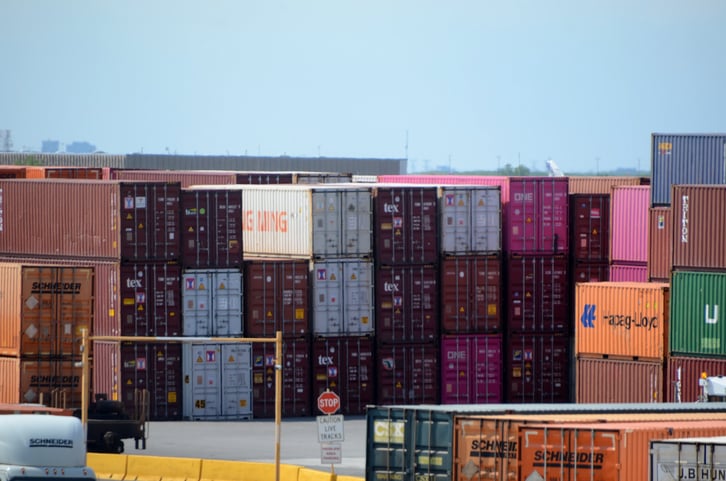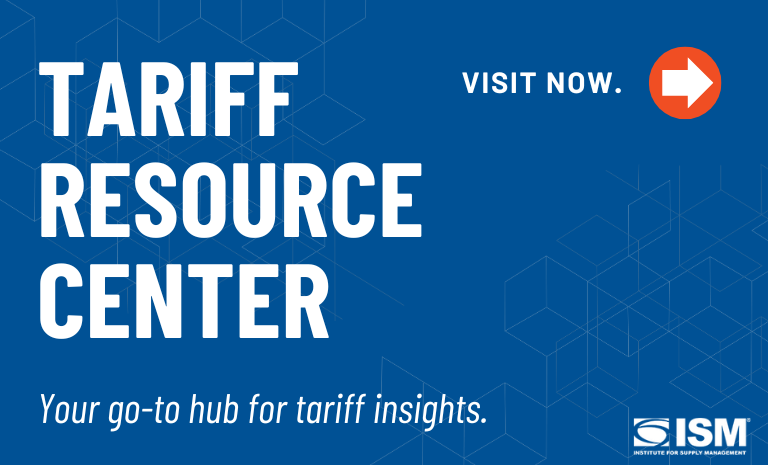Tariffs, Rising Costs and Relying on Supplier Relationships

Non-farm payrolls rose by only 73,000 jobs in July, below expectations and signaling a slower economy to many.
Institute for Supply Management®’s (ISM®) Manufacturing PMI® registered at 48 percent — a reading below 50 indicates the manufacturing sector economy is generally contracting. It was also below expectations, with the Employment Index sinking to 43.4 percent.
Contributing to the economic woes are tariffs, which the Trump administration has touted as a measure to bring manufacturing — and manufacturing jobs — back to the U.S. as well as to settle trade imbalances. “While (President Donald Trump’s) tariffs are bringing in billions of dollars in revenue for the U.S. government,” a Bloomberg article states,” the long-term economic effects remain unclear. Critics say the levies will raise costs for U.S. consumers and businesses and exacerbate inflation.”
Tuesday, Trump told CNBC’s “Squawk Box” that tariffs on pharmaceutical imports could reach as high as 250 percent. “He said he will initially impose a ‘small tariff’ on pharmaceuticals, but then in a year to a year and a half ‘maximum,’ he will raise that rate to 150 percent and then 250 percent,” CNBC’s article states.
Monday on social media, Trump threatened to substantially increase the 25 percent tariffs already imposed on Indian goods due to India continuing to purchase Russian oil. India responded by saying it was being targeted unfairly.
“The tariff story is now one of two tales — the economic one, which rightly or wrongly is ostensibly about trade imbalances, and the (punitive one) the administration is swinging around as a catch-all threat against any perceived ills,” says James Gellert, executive chairman of RapidRatings, a provider of global financial health analytics for organizations.
The economic tale will likely end with a 10-percent to 15-percent tariff for most imports from all countries, and “some goods will be exempted here and there and from time to time, for political purposes,” he says. Gellert doesn’t think punitive tariffs will end with the Trump administration: Such tariffs, he says, “will emerge and swing in myriad directions without warning.”
Although some tariff deals and tentative deals have been announced, there aren’t enough details for procurement and supply management organizations to plan thoroughly, Gellert says. This will leave many in a position of limbo for longer.
It also creates stress: “The added stress on the smaller and private companies is enormous and vastly underappreciated at present,” Gellert says.
“Tariffs of any amount increase the costs of doing business for all buying companies. In some respects, locking in higher tariffs would at least allow these companies to plan and forecast properly,” he says. “The biggest challenge for most companies doing business this year has been the limbo — not knowing when and by how much costs will increase, and not knowing how much costs can be shared downstream.”
Rising Costs
Joseph Sarkis, Ph.D., professor of management at The Business School at Worcester Polytechnic Institute in Worcester, Massachusetts, agrees, saying that the question is whether the cost increases will be pushed onto consumers or whether the manufacturers and companies impacted by tariffs will be willing to take on reduced margins.
“While some agreements on lower tariffs have been made allowing for managers to better plan their supply chains,” he says, “the consensus is that higher prices will occur for many products, but it is not clear how high the increases will be and when consumers might see those increases.”
RapidRatings conducted stress tests to understand how tariffs will impact U.S. businesses. Depending on the combination of tariffs that were used at any given time, the average costs for companies went up by an average of 6 percent to 16 percent, Gellert says.
The overall average is 9.3 percent increase in costs across all industries, he says: “For businesses dealing with higher-for-longer interest rates, elevated costs for materials and extended cash conversion cycles, that cost increase could be fatal. It is certainly detrimental.”
He continues, “The bottom line: Regardless of where supply chain exposure lies, cost increases are coming. Businesses would be wise to start working with their suppliers immediately to ensure they're equipped to handle the tariff impact.”
Sourcing and Suppliers
Sarkis notes that supply chain managers are looking closely at the different flows of products and the countries affected by tariffs.
Sourcing models can help in evaluating where products and materials are coming from and the current prices, he says: “Managers will have to adjust the tariff parameters based on the material and source. Companies will then have to determine how much a material or product is represented in their portfolio.”
The most important step for businesses to take, Gellert says, is getting financial transparency into their suppliers. Do suppliers have the financial wherewithal to survive substantial cost increases? What's their exposure in the most impacted countries?
Organizations, he says, should conduct thorough financial health assessments of suppliers to understand their vulnerabilities and identify support opportunities. If critical suppliers are lacking a financial health assessment, fill that gap now. If financial health assessments are based on out-of-date financial statements, refresh them immediately.
Then, collaborative financial health discussions with suppliers will help companies assess risks and develop mitigation strategies. If necessary, explore financial support options to help suppliers navigate challenges.
The businesses that work collaboratively with their suppliers will be best positioned to weather the tariff storm, Gellert says.

